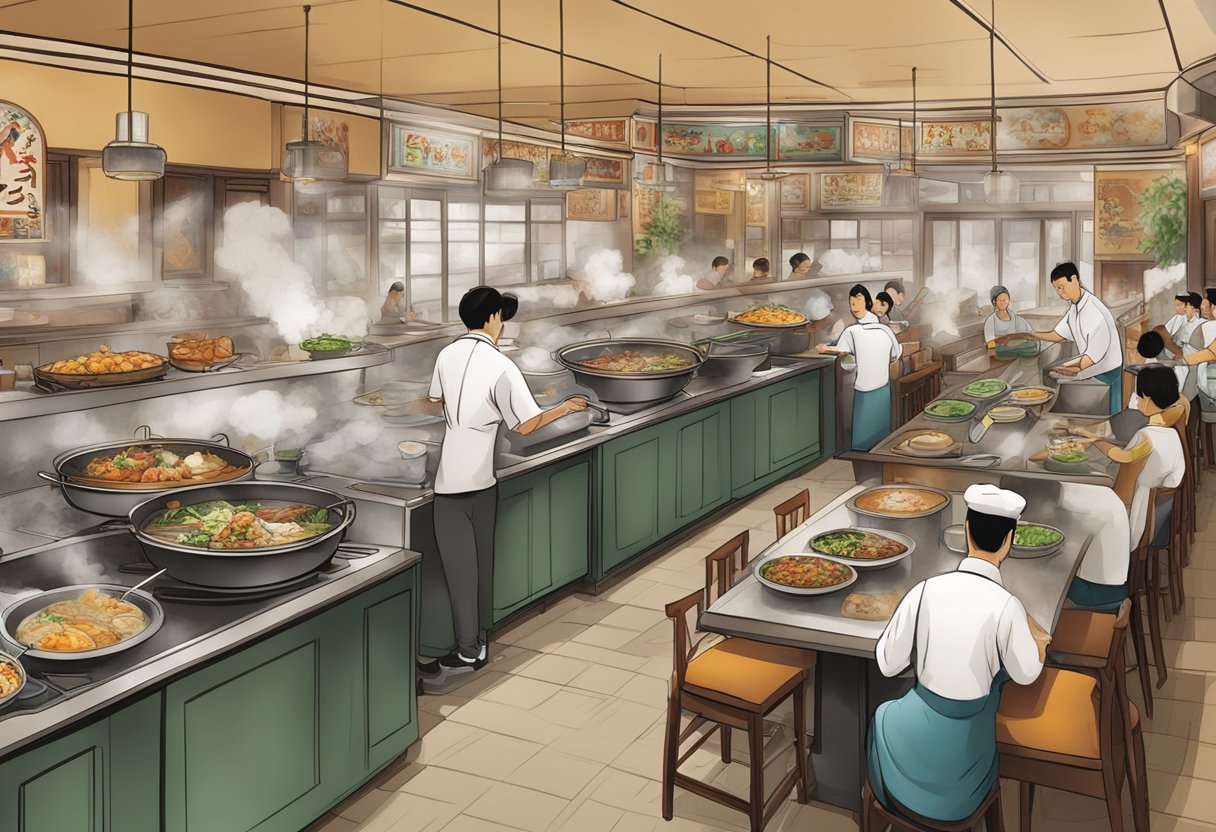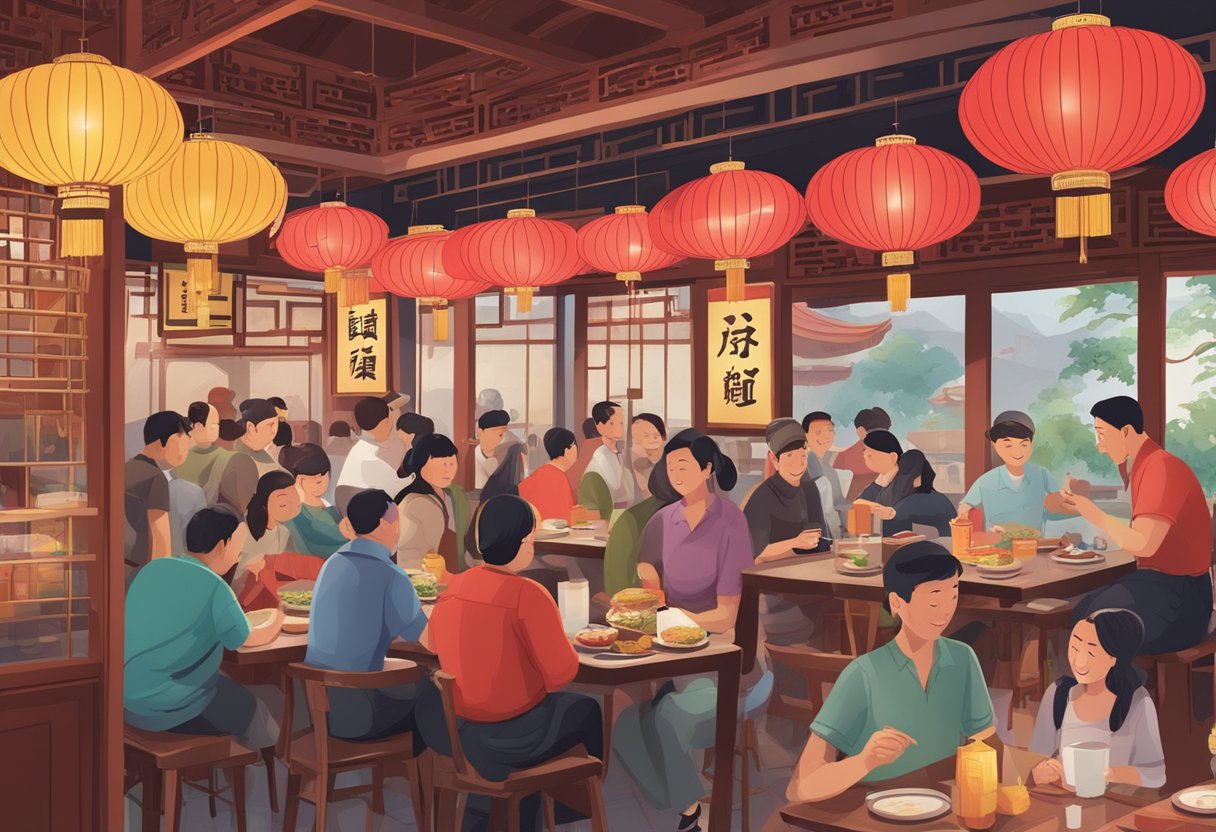How to Order Food in Chinese: A Simple Guide for Beginners
Ordering food in a Chinese restaurant can feel intimidating if you don't speak the language, but mastering a few essential phrases can transform your dining experience. Learning key Chinese phrases like "我要点菜" (wǒ yào diǎn cài - I want to order) and "请给我" (qǐng gěi wǒ - please give me) will help you navigate the menu and communicate effectively with your server.

Whether you're travelling through China or visiting your local Chinese restaurant, speaking the language adds authenticity to your dining experience and often leads to better recommendations from staff. Many Chinese restaurants appreciate customers who make an effort to order in Mandarin, and you might discover exciting dishes that aren't on the English menu.
The secret to successful ordering lies in mastering basic food vocabulary and essential restaurant phrases. With proper pronunciation and a handful of useful expressions, you'll be equipped to request specific dishes, ask about ingredients, and handle your entire dining experience in Chinese.
Key Takeaways
- Basic Chinese phrases can help you order food confidently and access authentic menu items
- Proper pronunciation and food vocabulary are essential for effective communication in Chinese restaurants
- Learning restaurant etiquette and key expressions enhances your overall dining experience
Getting Started with Basic Chinese for Ordering

Learning a few essential Chinese phrases will help you order food confidently and show respect for the local culture. The right vocabulary and menu knowledge can transform your dining experience from awkward pointing to smooth communication.
Essential Vocabulary and Phrases
Start with basic greetings like (Nǐ hǎo - hello) and "Xièxie" (thank you). These simple words create a positive first impression.
Common restaurant phrases you'll need:
- "Yǒu wèi ma?" (Do you have a table?)
- "Wǒ yào..." (I want...)
- "Qǐng gěi wǒ..." (Please give me...)
- "Duōshao qián?" (How much?)
When specifying quantities, use numbers followed by "ge" or "kuài". For example, "liǎng ge" means "two of them".
Navigating the Menu
Chinese menus often display both Chinese characters and pinyin (romanised Chinese). Look for common cooking methods like "chǎo" (stir-fried) and "zhá" (deep-fried).
Key menu sections typically include:
- 汤 (tāng) - soups
- 主食 (zhǔshí) - main dishes
- 小菜 (xiǎocài) - side dishes
- 饮料 (yǐnliào) - drinks
Take photos of dishes you enjoy and note their Chinese names for future reference. Many restaurants also have picture menus which can help with identification.
Mastering the Art of Chinese Dining

Chinese dining combines specific etiquette rules with practical considerations to create an enjoyable meal. You'll need to master both the social customs and communication skills to navigate the experience smoothly.
Ordering Etiquette and Table Manners
Always wait for the eldest person at the table to begin eating. When dining at a round table with a lazy Susan, rotate it clockwise and never spin it while someone is serving food.
Use your chopsticks properly - don't stick them vertically in rice or point them at others. Rest them across your bowl or on the chopstick rest when not in use.
Share dishes family-style rather than ordering individual portions. Take small portions from shared plates, and use the serving spoons provided rather than your personal chopsticks.
When pouring tea, tap two fingers on the table to show thanks. This gesture replaces a verbal 'thank you' during conversation.
Special Requests and Dietary Restrictions
Tell your server "Wǒ shì sùshí" if you're vegetarian, or point to specific ingredients you can't eat while saying "Bù néng chī" (cannot eat).
Ask for recommendations by saying "Nǐ yǒu shé me tuī jiàn?" Most servers will gladly suggest popular or seasonal dishes.
For spice levels, use "bù là" for no spice, "yì diǎn là" for slightly spicy, or "hěn là" for very spicy.
If you have specific allergies, it's best to write them down in Chinese characters beforehand and show the server your note.
Request extra vegetables or tofu by saying "Wǒ yào duō yīdiǎn cài" or "Wǒ yào duō yīdiǎn dòufu".
Popular Dishes and Ingredients to Explore

Chinese cuisine offers countless flavourful dishes that combine unique ingredients and cooking techniques, from fiery Sichuan specialities to delicate Cantonese preparations.
Savoury Highlights
Start your culinary journey with dumplings (jiaozi), filled with minced pork, prawns, or vegetables. These bite-sized delights come steamed or pan-fried.
Hot pot makes for a fun, interactive meal where you cook fresh ingredients in a simmering broth. You'll find both spicy Sichuan-style and mild mushroom broths.
Kung pao chicken packs a punch with its combination of diced chicken, peanuts, and dried chillies. For something milder, try Peking duck with its crispy skin and tender meat wrapped in thin pancakes.
Don't miss mapo tofu, a spicy Sichuan dish featuring silky tofu in a rich sauce. Sweet and sour pork offers a perfect balance of flavours with crispy meat in a tangy sauce.
Sweet and Refreshing Choices
Cool down with traditional Chinese dessert soups like red bean or mango cream with pomelo. These serve as light, refreshing endings to your meal.
Fresh lychee and longan make wonderful palate cleansers. Many restaurants offer seasonal fruit platters with dragon fruit, mangoes, and Asian pears.
Sip on Chinese tea throughout your meal - jasmine tea aids digestion, while oolong tea complements rich dishes perfectly.
Try tang yuan (sweet rice balls) in ginger syrup for a classic dessert experience. These chewy treats come with various fillings like black sesame or peanut paste.
Frequently Asked Questions

Basic Chinese restaurant phrases and proper dining etiquette can make your dining experience smoother and more enjoyable at Chinese establishments.
What should I say to order a meal politely at a Chinese restaurant?
Start with "我要点菜" (wǒ yào diǎn cài), which means "I'd like to order."
Make your order specific by stating the quantity before the dish name. For example: "两份炒饭" (liǎng fèn chǎo fàn) means "two portions of fried rice."
Can you give me a basic dialogue for ordering food in Mandarin?
Server: "您好,要点什么?" (nín hǎo, yào diǎn shén me?) - Hello, what would you like to order?
You: "我要一份宫保鸡丁" (wǒ yào yī fèn gōng bǎo jī dīng) - I'd like one portion of Kung Pao Chicken.
How do you ask for drinks when dining at a Chinese eatery?
Use "我要喝" (wǒ yào hē) followed by your drink choice. For tea, say "茶" (chá). For water, say "白开水" (bái kāi shuǐ).
Remember to specify hot or cold: "热的" (rè de) for hot, "冷的" (lěng de) for cold.
Could you tell me about dining etiquette I should follow in Chinese establishments?
Share dishes with your dining companions - individual portions aren't common in traditional Chinese restaurants.
Use chopsticks properly and never stick them vertically in your rice.
Don't flip fish over on the plate - instead, remove the bones and continue eating from the top.
What are the common phrases to use when placing an order at a Chinese restaurant?
"这个" (zhè ge) - this one - useful when pointing to menu items.
"请再来一份" (qǐng zài lái yī fèn) - please bring another portion.
"够了" (gòu le) - that's enough/that's all for now.
What's the right way to say 'I would like to order' in a Chinese restaurant setting?
"我想点菜" (wǒ xiǎng diǎn cài) - a polite way to say "I would like to order."
"我要点菜" (wǒ yào diǎn cài) - a more direct way to say "I want to order."
Add "麻烦您" (má fan nín) at the end to say "trouble you," making your request extra courteous.